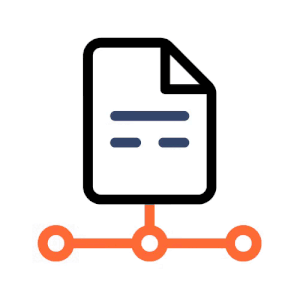Effective employee relations strategies are essential to the success of SaaS company’s expansion initiatives in Latin America. For those companies venturing into this vibrant region, fostering harmonious employee relationships with the nearshore software engineers and product specialists is a must. Here’s a practical guide tailored for thriving amidst Latin America’s dynamic work cultures while leveraging the expertise of distributed teams.
FAQs on Employee Relations
This aligns with the concepts of working from home and adapting to the dynamics of managing remotely while ensuring the long-term success of the organization’s product and/or digital transformation initiatives.
Utilizing cloud-based platforms and instant messaging tools also facilitates staying connected and improving the bottom line of the organization.
Cultivating a Positive Work Environment
It’s all about building strong relationships. Foster a positive workplace culture by prioritizing open communication, transparency, and trust. Encourage dialogue and feedback mechanisms to ensure employees feel heard and valued.
How can SaaS companies cultivate a positive work environment among product and engineering teams?
 Encourage Open Communication: Foster an environment of transparent and open communication channels. Implement regular team meetings and open-door policies to foster transparent dialogue.
Encourage Open Communication: Foster an environment of transparent and open communication channels. Implement regular team meetings and open-door policies to foster transparent dialogue.
 Prioritize Team Collaboration Tools: Implement efficient project management tools for seamless collaboration. Utilize platforms like Slack or Asana for seamless collaboration and project management.
Prioritize Team Collaboration Tools: Implement efficient project management tools for seamless collaboration. Utilize platforms like Slack or Asana for seamless collaboration and project management.
 Promote Work-Life Balance: Support flexible work hours and policies to encourage a healthy work-life balance. Offer flexible work hours and remote work options to support a healthy lifestyle.
Promote Work-Life Balance: Support flexible work hours and policies to encourage a healthy work-life balance. Offer flexible work hours and remote work options to support a healthy lifestyle.
Understanding Cultural Dynamics
Latin America is a quilt made up of diverse work cultures. Latin America comprises diverse cultures and work dynamics. Tailor employee engagement strategies to resonate with local practices while respecting regional sensitivities and values.
What cultural work dynamics should companies look into when expanding their teams to LatAm?
 Communication Style: In Brazil, direct and assertive communication is embraced, while in Colombia, it tends to be more indirect and diplomatic.
Communication Style: In Brazil, direct and assertive communication is embraced, while in Colombia, it tends to be more indirect and diplomatic.
 Work Ethic: Punctuality is valued in Argentina, whereas in Mexico, a more relaxed approach to time is common.
Work Ethic: Punctuality is valued in Argentina, whereas in Mexico, a more relaxed approach to time is common.
 Hierarchy: Chile often adopts a more hierarchical structure, contrasting with Uruguay’s preference for egalitarianism in the workplace.
Hierarchy: Chile often adopts a more hierarchical structure, contrasting with Uruguay’s preference for egalitarianism in the workplace.
Employee Engagement Strategies
Empowering and motivating teams may take work. Implement initiatives that boost morale and productivity. Offer professional development opportunities, recognition programs, and support networks to ensure employees feel invested in the company’s success.
What employee engagement strategies can companies use to ensure the LatAm team is aligned with their American counterparts?
 Professional Development: Offer skill enhancement opportunities and career growth prospects. Provide online courses or mentorship programs for skill enhancement and career growth, for instance.
Professional Development: Offer skill enhancement opportunities and career growth prospects. Provide online courses or mentorship programs for skill enhancement and career growth, for instance.

Recognition Programs: Implement recognition initiatives for achievements and contributions. You can implement monthly or quarterly awards to acknowledge outstanding contributions.
 Support Networks: Create avenues for mentorship and peer support within the company. Setting up internal communities or forums for mentorship and peer support mechanisms is super helpful.
Support Networks: Create avenues for mentorship and peer support within the company. Setting up internal communities or forums for mentorship and peer support mechanisms is super helpful.
Conflict Resolution and Mediation
Miscommunication is bound to happen at some point, just like it would in a collocated setting. So how can you be addressing workplace conflicts? Develop robust conflict resolution mechanisms to handle disputes professionally and swiftly. Train HR and management to mediate and resolve conflicts impartially, fostering a harmonious work environment.
How can conflict resolution and mediation happen in distributed settings, given that miscommunication can happen?
 Clear Communication Protocols: Establish clear communication guidelines and protocols for conflict resolution discussions.
Clear Communication Protocols: Establish clear communication guidelines and protocols for conflict resolution discussions.
 Utilize Open Camera Video Calls: Encourage face-to-face video calls to address misunderstandings promptly.
Utilize Open Camera Video Calls: Encourage face-to-face video calls to address misunderstandings promptly.
 Mediation Skills Training: Train HR and team leads in mediation techniques for impartial conflict resolution.
Mediation Skills Training: Train HR and team leads in mediation techniques for impartial conflict resolution.
Compliance and Legal Considerations
Adhering to labor regulations can be tough without a local partner. Comply with local labor laws and regulations prevalent in each Latin American country. Stay updated with employment legislation to mitigate legal risks and ensure fair treatment of employees.
What are some labor compliance and legal considerations to take into account in the context of international employee relations?
 Local Labor Laws: Adhere to specific labor laws prevalent in each LatAm country of operation.
Local Labor Laws: Adhere to specific labor laws prevalent in each LatAm country of operation.
 Employment Contracts: Ensure contracts comply with local regulations to mitigate legal risks.
Employment Contracts: Ensure contracts comply with local regulations to mitigate legal risks.
 Employee Rights: Respect and safeguard employee rights concerning fair treatment and working conditions.
Employee Rights: Respect and safeguard employee rights concerning fair treatment and working conditions.
Leverage Effective Employee Relations for SaaS Growth
Prioritize employee relations to cultivate a cohesive and motivated workforce in Latin America. Establishing strong connections and positive dynamics among employees enhances productivity and contributes to overall company success.
Intrigued by effective employee relations for your SaaS growth in Latin America? Delve deeper into actionable insights and gain a competitive advantage by fostering strong employee relations strategies.

Ubiminds’ Head of Relationship Success Lucas Carvalho blends 7+ years in customer success leadership with a passion for the sports industry, co-founding the Recife Mariners. His mastery in strategic planning and fostering stakeholder engagement significantly influences organizations, notably guiding SaaS companies on their journey to expand their teams.





